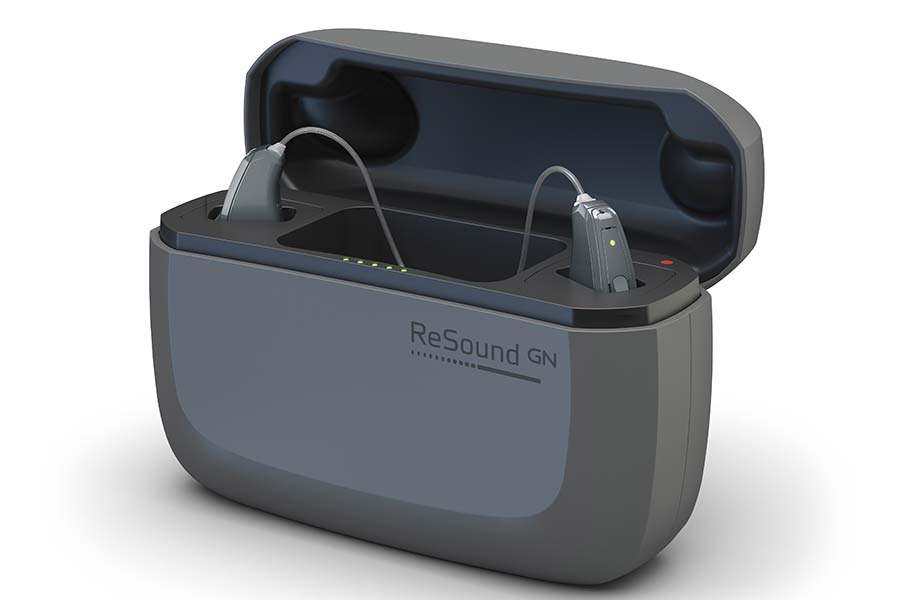Receiver In Canal hearing aids or RICs have proven to be exceptionally popular with hearing care professionals and the public alike. They are exceptionally versatile hearing aids that offer power, functionality and discretion. Generally, RICs are fitted with instant fit silicone tips of varying sizes and shapes. They are usually only fitted with custom tips when the hearing loss really calls for it. However, if you are investing in a set of RICs, it might be a good idea to consider getting custom tips made for them. Let's take a look at why a custom tip may be a better option.

Generic Silicone Tips
Firstly, generic silicone tips are generally fine and if you have some on your devices and are having no problems, well then don't panic and run out to get custom tips. Having said that, let's look at the reasons why I feel custom tips serve people better.
Custom Tips For RICs
Firstly, custom tips are manufactured from a mould of your ear canal, usually in hard acrylic although you can get them in silicone if needed. That means that they are custom made to fit your canal perfectly. When done correctly, they are very comfortable, fit perfectly and deliver outstanding retention (they stay in the ear where they are supposed to).
That really is the key for me, the retention in the ear canal. That means that the tip does not slip out, it means that the position of the tip shouldn't change. That is important for sound quality. The issue with generic tips that I see is that they move out during the day for many people which means the sound quality deteriorates. It also means that the calibration data and validation data gleaned during the fitting goes out the window. That means that the hearing aids aren't necessarily working their best as designed. Let me explain that.
The Fitting & Validation
During the fitting process, we push the RIC tips into your ears and calibrate the feedback system and amplification system in some hearing aids by assessing the sound leakage from your ear canals. Those parameters are important because they are parameters that the hearing aid bases everything on.
Further to that, when we validate the fitting through Real Ear Measurements or Speech Mapping, we put in our probe tips and push the RIC tips into your ears before ensuring that the hearing aids are indeed hitting the targets. Again, this based on the position of the receivers in your ears.
Unfortunately, in my personal experience, most generic instant fit tips will change position during the day, especially on my left ear. Therefore undermining the parameters that have been set and changing the calculations. Is it a big change though? I don't know, and I doubt if anyone does for sure.
I certainly can't ever remember seeing a study on it. I do know it is a change, I also know that my hearing aids sound better when they are fully pushed into my ear, and for me, that is enough to consider custom tips.
Custom tips should not change position in the ear canal, that means I can be confident that the parameters set through calibration and speech mapping shouldn't change. It just means that I feel more confident that the hearing aids will be performing as they should be, exactly the same as they were when I fitted them.
Occlusion With Custom Tips
I had a fantastic question from a reader and realised I should have addressed it. Occlusion is a problem that occurs when the ears are closed up. Basically, you feel stuffed up and it is unpleasant. They asked would custom tips cause occlusion? The answer is probably not. Let me explain.
Open Fitting
Even if you are suitable for only an open fitting, custom tips can be made for you with the open effect. In essence, these are hollow moulds that the receiver (speaker) clip into. They give you the benefits of a more custom fitting without occluding your ear. Depending on how good your low-frequency hearing is, you might be suitable for these types of custom tip, or, you may be suitable for a solid custom tip with a vent in it.
The vent is to allow low-frequency sound pressure to escape from your ear canal. Occlusion is only a phenomenon when you have good low-frequency hearing. If your low-frequency hearing is worst than 40 dB, generally you shouldn't suffer from occlusion.
If you want to keep up with the latest articles on Hearing Aid Know, either subscribe to our mailing list or click the Facebook button below.










